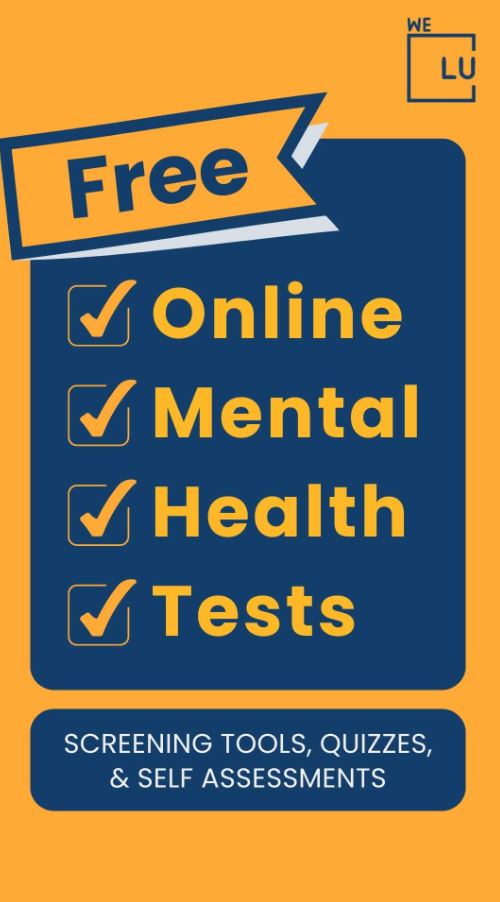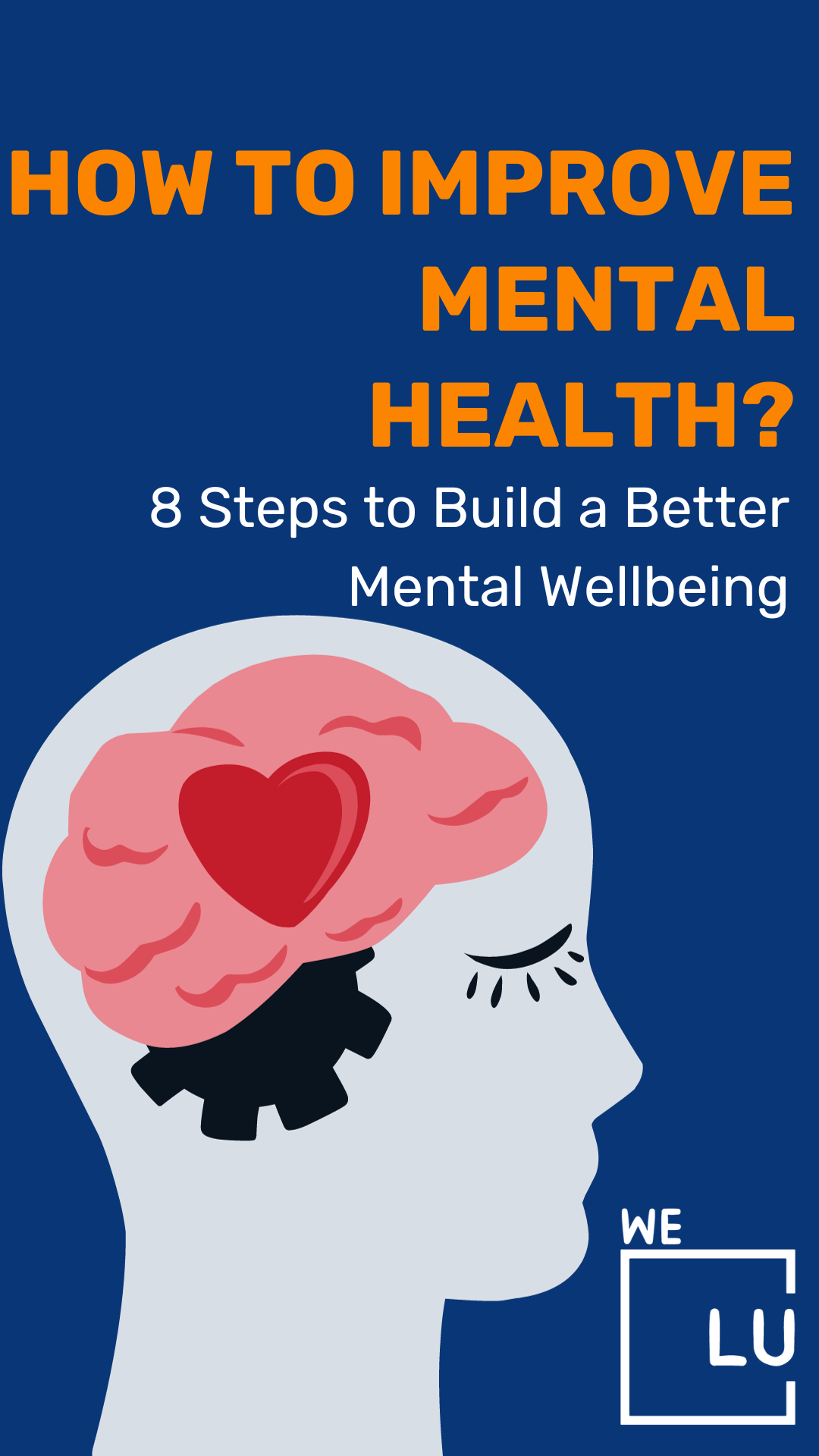Can You Snort Methadone? Methadone Wafers 40mg Side Effects
When methadone comes in tablet or wafer form, it can either be swallowed whole or mixed in liquid if it’s a dispersible tablet. Dispersible tablets should not be chewed or swallowed. Instead, the whole tablet or part of it is placed in at least 4 ounces (120 milliliters) of liquid, such as water, orange juice, or another citrus beverage to dissolve. The entire mixture is then taken immediately.
Others also use slang terms such as “wafers.” It is a term used as slang for 40mg Methadone. Normally white, but also come in orange methadone wafers. A wafer is round and about the size of a quarter. According to the DEA (Drug Enforcement Administration), 40 mg of this drug formulation is indicated for the detoxification and maintenance treatment of opioid addiction. The methadone wafers 40 mg strength is not FDA-approved for use in the management of pain. Thus, the distribution and availability of the 40 mg formulation will be limited to registrants in only those settings using the 40 mg formulation for the appropriate indication.
Methadone Side Effects
Can you snort methadone wafers 54 883? Normally, methadone is to be taken orally. However, some individuals decide to inhale or snort their methadone instead. While this might seem more glamorous than simply taking a pill, it can have deadly consequences. Methadone is an opioid medication used for the treatment of pain as well as for opioid addiction treatment. [1]
It is similar to morphine with longer-lasting effects. Methadone is physically addictive, especially when used in high doses. If taken repeatedly, tolerance to this drug can develop fast. This means the user will need to take more Methadone wafers to achieve the desired effects. In methadone detox, patients are treated for methadone withdrawal and allowed to slowly put an end to their methadone dependence.
Methadone will help in reducing withdrawal symptoms and cravings in the short term without producing the euphoria seen when using other opioids. To reduce withdrawal symptoms and prevent drowsiness and other adverse effects, a medical professional will put a patient on medication at the lowest dose feasible. However, too much of the drug might result in euphoria or excessive sleepiness. You have to cooperate with your doctor to determine the best dose, it may take some time and effort, and regular observation of the drug’s effects is necessary to assist the medical professional determine the right dosage.
Those with a dependence on this drug will experience methadone withdrawal symptoms if they discontinue taking the medication. Withdrawal happens because the body has to relearn how to function without Methadone wafers in its system. While the body tries to reestablish normal functions, uncomfortable opioid withdrawal symptoms occur, making recovery difficult.
In general, methadone is specifically formulated to produce measured or controlled effects. Can you shoot methadone? If this drug is altered, such as when the tablets are crushed to be snorted, smoked, or injected, this is considered drug abuse, and it changes the way methadone is absorbed and metabolized in the body.
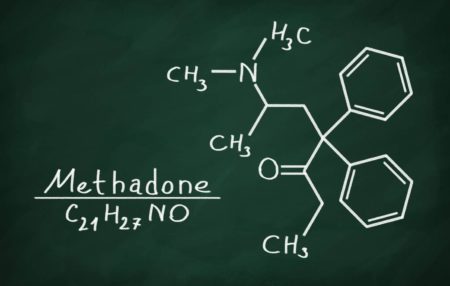
It is crucial to understand that using methadone wafers in conjunction with another substance that depresses the central nervous system, such as alcohol, benzodiazepines, or other opioids, can result in respiratory depression, a coma, or even death. It is noteworthy that most methadone overdose deaths show levels of the drug that by themselves would not constitute a lethal dose, but are frequently the result of the interaction of other medications or drugs taken with them. Overdose death occurs when the impact of the medication on the heart functioning and respiratory system of a person exceeds that person’s tolerance.
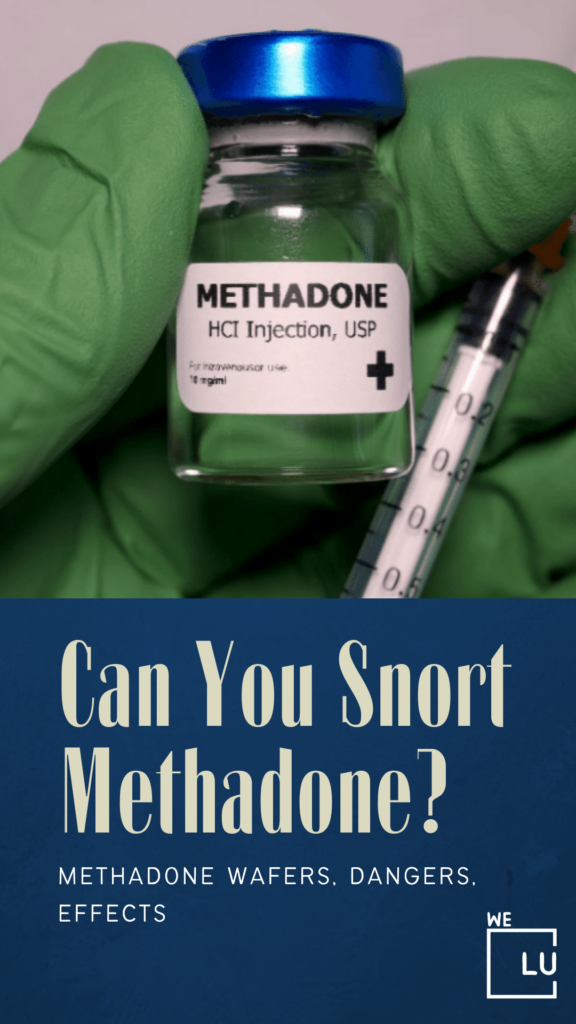
Skip To:
Learn More:

Get Your Life Back
Find Hope & Recovery. Get Safe Comfortable Detox, Addiction Rehab & Dual Diagnosis High-Quality Care.
Hotline(844) 597-1011Methadone Mechanism of Action Drug Facts
Methadone Generic Name: Methadone (oral/injection) [ METH-a-done ]
Methadone Brand Names: Dolophine, Methadose, Methadose Sugar-Free, Diskets
Dosage Forms & Methadone Liquid Forms: Injectable solution; intravenous solution; oral concentrate; oral solution; oral tablet; oral tablet, dispersible.
Methadone Drug Class: Opioids (narcotic analgesics)
Methadone Schedule: Schedule II drug under the Controlled Substances Act.
Methadone Interactions
This medication can cause CNS depression and respiratory compromise; hence it should be used with extreme caution in patients with CNS-related pathologies such as trauma, increased intracranial pressure, dementia, delirium, etc. It should not be used in conjunction with medications or substances with similar depressant effects such as other opioids, benzodiazepines, alcohol, antipsychotics, etc., unless necessary. Drugs that may increase the clearance of methadone or decrease its effects must also be used with caution to prevent precipitating withdrawal symptoms.
The following examples are not an exhaustive list of drug interactions but provide some commonly documented drug interactions.
Examples of drugs that may increase methadone side effects long term and risk overdose symptoms:
- Ciprofloxacin
- Benzodiazepines
- Alcohol
- Fluconazole
- Cimetidine
- Fluoxetine
- Urine alkalizing agents
Methadone Clinic Rules and Regulations
It is crucial to seek accredited and professional options when searching for “methadone treatment near me” or “methadone doctors near me.” Opioid treatment programs (such as online methadone clinics, and clinic methadone treatment options) must meet federal certification and accreditation requirements and state licensing requirements.
Under federal regulations, opioid treatment programs must be certified by the federal Substance Abuse and Mental Health Services Administration (SAMHSA), which is part of the U.S. Department of Health and Human Services. The regulations also require these programs to be accredited by an independent, SAMHSA-approved accrediting body to dispense opioid treatment medications (e.g., the Commission on Accreditation of Rehabilitation Facilities (CARF) or the Joint Commission). Treatment programs must first obtain accreditation and then seek certification. Opioid treatment programs also must register with the federal Drug Enforcement Administration. [3]
Examples of drugs that may decrease methadone effects and risk withdrawal symptoms:
- Efavirenz
- Phenobarbital
- Phenytoin
- Rifampin
- Ritonavir
- Carbamazepine
- Urine acidifying agents
Methadone Definition & Drug Fact Sheet by DEA. Publicly Made Available for Opioid Use Disorder Awareness
Methadone for Pain Management & Treatment of Opiate Dependence Statistics
According to the Substance Abuse and Mental Health Services Administration (SAMHSA), effective treatment for opioid use disorder includes medication-assisted treatment (MAT) which combines behavioral therapy and medications. The Food and Drug Administration (FDA) approved medications for use in treating opioid use disorder including methadone, buprenorphine (buprenorphine with naloxone), and naltrexone. Naltrexone is an opioid antagonist, methadone is an opioid agonist and buprenorphine is a partial opioid agonist. MAT has been found to reduce morbidity and mortality, decrease overdose deaths, reduce transmission of infectious disease, increase treatment retention, improve social functioning, and reduce criminal activity. [4]
400,000
More than 400,000 people in the United States received methadone as part of their addiction treatment in 2019.
Source: NIDA
21-25%
Clients receiving treatment with methadone accounted for approximately 21 to 25 percent of all substance abuse treatment clients each year.
Source: NIDA
56,516
Deaths involving synthetic opioids other than methadone (primarily fentanyl) continued to rise with 56,516 overdose deaths reported in 2020.
Source: NIDA
Get Help. Get Better. Get Your Life Back.
Searching for Accredited Drug and Alcohol Rehab Centers Near You?
Even if you have failed previously and relapsed, or are in the middle of a difficult crisis, we stand ready to support you. Our trusted behavioral health specialists will not give up on you. When you feel ready or just want someone to speak to about therapy alternatives to change your life call us. Even if we cannot assist you, we will lead you to wherever you can get support. There is no obligation. Call our hotline today.
(844) 597-1011Can You Sniff Methadone? Snorting Methadone Wafers
Can you snort methadone wafers? Can you snort methadone 10mg? Yes, snorting methadone is a quick route of administration of the drug, sending it straight across the blood-brain barrier for a near-instantaneous high. The risk of overdose when taking methadone in this manner is much higher than it is when taking it orally. Less of the drug is needed for fatal results as well.
An opioid overdose can be life-threatening. It can lead to coma or brain damage. Swift administration of the opioid antagonist naloxone can help to reverse a methadone overdose. An additional side effect of snorting methadone is long-term damage to the nasal and sinus cavities, which can cause a person to suffer from chronic nosebleeds and a runny nose as well as possible permanent damage to the sense of smell.
The effects of snorting methadone can include respiratory issues, such as lung infections and illnesses, and can also result from snorting methadone wafers. Since the drug is more powerful when snorted, abusing it in this manner can more quickly lead to drug dependence and addiction.
Can You Smoke Methadone? Smoking Methadone Wafers
When methadone is smoked, it may often be combined with other drugs like heroin, cocaine, or marijuana. Mixing methadone wafers with other drugs can lead to dangerous and unintended complications, not the least of which is overdose.
As a central nervous system depressant, if methadone is combined with other opioids, benzodiazepines, sedatives, or alcohol, these substances can interact with each other to exacerbate the effects of the sedative. Respiratory depression and cardiovascular collapse can be disastrous results.
Smoking methadone with stimulant drugs like cocaine, methamphetamine, or prescription stimulants can also be hazardous, as these substances work opposite ways. This means the stimulant drug can mute the sedative effects of methadone wafers. A person may then take more and more of each without recognizing that the drugs are actually building up in the bloodstream. As a result, they can reach toxic levels quickly.
Can You Shoot Up Methadone? Injecting Methadone Wafers
People who inject methadone are at risk for a number of complications, including damage to the heart, arteries, and veins. Methadone is composed of a number of additives, and injecting the drug prevents these additives from being broken down. As a result, these toxins can enter the bloodstream and damage the system.
Injecting methadone tablets or liquid greatly increases the risk of overdose and death because too much of the drug is entering the body at one time. Intravenous drug use also increases the risk of skin and heart infections (endocarditis). It is common among people who abuse substances via injection.
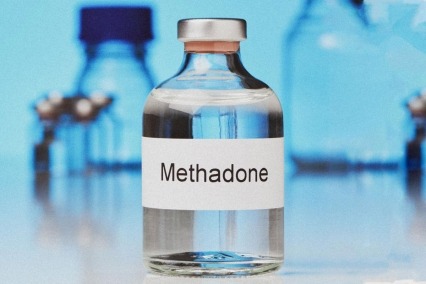
Methadone Side Effects
Along with its needed effects, methadone may cause some unwanted effects. Although not all of these side effects may occur, if they do occur they may need medical attention [2].
Methadone Side Effects Requiring Immediate Medical Attention
Check with your doctor immediately if any of the following side effects occur while taking methadone:
- Black, tarry stools
- Bleeding gums
- Blood in the urine or stools
- Blurred vision
- Bulging soft spot on the head of an infant
- Change in the ability to see colors, especially blue or yellow
- Changes in skin color
- Chest discomfort or pain
- Confusion
- Cough
- Coughing that sometimes produces a pink frothy sputum
- Darkening of the skin
- Decreased urine output
- Diarrhea
- Difficult, fast, noisy breathing
- Difficulty with swallowing
- Dilated neck veins
- Dizziness
- Dizziness, faintness, or lightheadedness when getting up suddenly from a lying or sitting position
- Dry mouth
- Extreme fatigue
- Fainting
- Fast, slow, or irregular heartbeat
- Headache
- Hives, itching, or skin rash
- Increased sweating
- Increased thirst
- Irregular heartbeat
- Irregular, fast or slow, or shallow breathing
- Loss of appetite
- Mental depression
- Muscle pain or cramps
- Nausea or vomiting
- Numbness or tingling in the hands, feet, or lips
- Pain
- Pale or blue lips, fingernails, or skin
- Pinpoint red spots on the skin
- Puffiness or swelling of the eyelids or around the eyes, face, lips, or tongue
- Seizures
- Sweating
- Swelling of the face, fingers, feet, or lower legs
- Tenderness
- Trouble breathing
- Trouble sleeping
- Trouble urinating
- Unusual bleeding or bruising
- Unusual tiredness or weakness
- Weight gain
Get emergency help immediately if any of the following symptoms of overdose occur while taking methadone:
Symptoms of overdose
- Change in consciousness
- Chest pain or discomfort
- Cold, clammy skin
- Constricted, pinpoint, or small pupils (black part of the eye)
- Coughing that sometimes produces a pink frothy sputum
- Decreased awareness or responsiveness
- Increased sweating
- Irregular, fast, slow, or shallow breathing
- Loss of consciousness
- No muscle tone or movement
- Pale or blue lips, fingernails, or skin
- Sleepiness or unusual drowsiness
- Slow or irregular heartbeat
- Swelling in the legs and ankles
Methadone Side Effects Not Requiring Immediate Medical Attention
Some side effects of methadone may occur that usually do not need medical attention. These side effects may go away during treatment as your body adjusts to the medicine. Also, your healthcare professional may be able to tell you about ways to prevent or reduce some of these side effects.
Check with your health care professional if any of the following side effects continue or are bothersome or if you have any questions about them:
- Absent, missed, or irregular menstrual periods
- Anxiety
- Blurred or loss of vision
- Confusion about identity, place, and time
- Constipation
- Decreased interest in sexual intercourse
- Disturbed color perception
- Double vision
- False or unusual sense of well-being
- Halos around lights
- Inability to have or keep an erection
- Irritability
- Lack or loss of strength
- Loss in sexual ability, desire, drive, or performance
- Night blindness
- The overbright appearance of lights
- Redness, swelling, or soreness of the tongue
- Restlessness
- Stopping menstrual bleeding
- Tunnel vision
- Weight changes
- Welts
Methadone Side Effects on Heart
Methadone may cause a life-threatening heart rhythm disorder. Call your doctor at once if you have a headache with chest pain and severe dizziness, and fast or pounding heartbeats. Your heart function may need to be checked during treatment.
Methadone Side Effects on Stomach
Methadone can cause various side effects associated with an upset stomach such as diarrhea, vomiting, nausea, and abdominal pain. Many similar symptoms are associated with opiate withdrawal but while taking methadone, these symptoms are generally less severe and will subside on their own in time. If you experience any side effects that prevent you from holding down fluids for a prolonged period, you should seek prompt medical attention as this could lead to dehydration and other serious complications.

Methadone Side Effects on Skin
Feeling itchy after taking methadone isn’t usually a major cause for concern. This is common, and the sensation may subside shortly. A methadone allergy or adverse reaction to methadone, however, is worth discussing with your doctor. Together, you can both determine whether continuing to take methadone is right for you.
Methadone Side Effects on Teeth
Methadone side effects on teeth aren’t often as pronounced as what’s seen with methamphetamines, but it can contribute to some tooth decay. The reason methadone’s side effects on teeth are present is that it can cause dry mouth, which increases the presence of bacteria and plaque in the mouth.
First-class Facilities & Amenities
World-class High-Quality Addiction & Mental Health Rehabilitation Treatment
Rehab Centers TourRenowned Addiction Centers. Serene Private Facilities. Inpatient rehab programs vary.
Addiction Helpline(844) 597-1011Proven recovery success experience, backed by a Team w/ History of:
15+
Years of Unified Experience
100s
5-Star Reviews Across Our Centers
10K
Recovery Success Stories Across Our Network
- Low Patient to Therapist Ratio
- Onsite Medical Detox Center
- Comprehensive Dual-Diagnosis Treatment
- Complimentary Family & Alumni Programs
- Coaching, Recovery & Personal Development Events
Dangers of Methadone Abuse
Can You Snort Methadone? Abusing methadone comes with many potential dangers, regardless of how the drug is ingested. The more methadone a person consumes, the more likely he or she is to experience these dangers.
Potential side effects of methadone use include:
- Confusion or impaired cognition
- Memory problems
- Constipation
- Nausea and vomiting
- Slowed heart rate and breathing
- Impaired coordination
- Dizziness
- Fatigue
- Muscle aches
Additionally, abusing methadone increases a person’s risk of overdose. A methadone overdose can be incredibly dangerous and even deadly if not properly treated. Side effects of an overdose include clammy skin, shallow breath, coma, and convulsions. If you believe someone is suffering from a methadone overdose, seek medical help immediately.
Can You Overdose on Methadone?
All opioids have a risk of overdose. The risk is especially high when you start treatment and stop taking opioids (methadone or other opioids) for a while and then start again. Mixing opioids with other drugs also increases the risk of overdose. If you or someone you know uses opioids, it is a good idea to have a free naloxone kit. Naloxone is a medication that can temporarily reverse the effects of an opioid overdose and allow time for medical help to arrive.
An overdose involving methadone is a potentially life-threatening emergency. It is indicated by any of the following:
- Trouble breathing
- Cold and bluish skin
- Nausea and vomiting
- Drowsiness and loss of consciousness
- Pinpoint pupils
- Irregular heart rate
- Extreme mental confusion
- Balance and coordination issues
- Muscle weakness
- Agitation
- Hallucinations
Is Methadone Addictive?
Tolerance
Tolerance happens in the body when it “gets used to” having a certain substance like methadone. For example, when a person is given a prescription, the doctor may tell them that they will feel dizzy for a day or two until they adjust to the new chemical compounds contained in the medication. When the dizziness wears off, tolerance has been achieved.
In the case of an individual who seeks that dizzy feeling, or the “high” provided by the medication, it is necessary to take more of the drug to achieve the feeling. Even if someone does not intend to become intoxicated, they may take more of the medication when the painkilling effects aren’t as profound.
Withdrawal
Because methadone is a synthetic opioid drug, the withdrawal symptoms are similar to heroin. Unlike heroin, methadone withdrawal can take several days to develop. Withdrawal symptoms will happen when a person stops taking the drug whether they are entering a detox treatment as the first step in an overall recovery plan, or simply because they have run out of their drug of choice and have been unable to obtain more. These symptoms include:
- Sore muscles
- Cramping
- Diarrhea
- Chills
- Nausea and vomiting
- Insomnia and restlessness
- Fatigue
Lack of Control
In some circumstances, addiction to methadone, like other drugs, can derail a person’s best intentions. For instance, someone may recognize, on a conscious level, that they have a problem with methadone, They may tell themselves, or you, that they will only take a little of the drug to stave off the withdrawal symptoms. They may insist that they will only use it on the weekends or in social settings. They insist they are in control.
When the time comes, however, they may use more of the drug than even they intended, seemingly unable to stop until there are no drugs left. This compulsion to use drugs is a serious sign that addiction may be present.
Using Drugs Becomes a Life Priority
When someone suffering from addiction wakes in the morning, they may have only one thought on their mind. Where can they obtain their daily dose of methadone for the day? They may spend an incredible amount of time arranging for the purchase of the drugs, until such time as they have an adequate supply in their possession.
More Important Than Family
Some individuals who have become addicted to drugs like methadone will choose to use drugs rather than take part in activities that used to be important to them. They may elect to stay home and abuse drugs rather than attend a school play in which their child is performing. They may miss school meetings, birthday parties, and even holidays with friends and family. They may be frequently absent from work because they are too sick or too tired due to their drug use.
World-class, Accredited, 5-Star Reviewed, Effective Addiction & Mental Health Programs. Complete Behavioral Health Inpatient Rehab, Detox plus Co-occuring Disorders Therapy.
CALL(844) 597-1011End the Addiction Pain. End the Emotional Rollercoaster. Get Your Life Back. Start Drug, Alcohol & Dual Diagnosis Mental Health Treatment Now. Get Free No-obligation Guidance by Substance Abuse Specialists Who Understand Addiction & Mental Health Recovery & Know How to Help.
Methadone Addiction
Because many individuals receive prescriptions for strong painkillers every year, more and more people suffer from addiction to prescription pain medications. These are often oxycodone- or hydrocodone-based medicines, such as Vicodin, Percocet, or OxyContin. In addition, lawmakers and regulators now say that prescription pain medications are over-prescribed for problems that may not be fixed by this medication, such as chronic back pain, or they are prescribed in large quantities for post-surgery pain treatment.
Although the Food and Drug Administration does not recommend methadone as a prescription painkiller for these types of pain, over 4 million prescriptions were written for methadone in 2009. The rise in methadone prescriptions, specifically for use as a painkiller, is because methadone is cheap, especially compared to hydrocodone and oxycodone. In addition, insurance companies are sometimes more willing to cover the cost of methadone instead of brand-name opioid painkillers, which has driven many people to switch their prescriptions to methadone.
Because methadone is designed to be a long-acting drug, it can build up very quickly in the body, which can mean that taking even one more dose than prescribed can lead to an overdose. Therefore, unless carefully monitored by a medical professional, methadone use is dangerous, and abuse or addiction can lead to severe consequences.
Methadone’s half-life, depending on dose, ranges anywhere from 8 to 59 hours, while the analgesic, or painkilling, effects last up to 8 hours. The long half-life benefits those recovering from a heroin or prescription painkiller addiction, as it stays in the body to ease withdrawal symptoms and cravings. However, it is less effective for treating chronic pain conditions related to diseases like cancer, multiple sclerosis, or osteoarthritis because the painkilling effects do not last as long as the drug remains in the body. As a result, individuals who take methadone as a painkiller can put themselves in danger of an overdose if their pain returns before safely taking their next dose.

Methadone Addiction Treatment
Can You Snort Methadone? There is a strong link between mental health and substance abuse. Individuals who struggle with mood disorders like depression, ADHD, and anxiety are more susceptible to developing an addiction to drugs or alcohol, often to self-medicate symptoms of their underlying mental health condition. These co-occurring disorders can make each other worse without proper treatment.
If you’re asking the question, “can you snort methadone?”, then you should also be aware of the risks involved in doing so. If you are experiencing methadone withdrawal, it’s crucial to first get an accurate assessment of all the symptoms. When the symptoms have been evaluated by a mental health professional, it may be determined that another form of mental condition is present and needs a particular type of treatment. Very often, some combination of psychotherapy, medication, and/or lifestyle changes are effective for coping with functional.
Medically-Assisted Detox
Detox is often considered the first stage of treatment. It will help you navigate the complicated process of methadone withdrawal, but it doesn’t address patterns of thought and behavior that contribute to drug use. Various treatment approaches and settings can help provide the ongoing support necessary to maintain long-term sobriety after you complete methadone detox.
Cravings are very common during detox and can be challenging to overcome. This often leads to relapse. Constant medical care provided during inpatient treatment helps prevent relapse. Clinicians can provide the necessary medication and medical expertise to lessen cravings and the effects of methadone withdrawals.
Psychotherapy
Several different modalities of psychotherapy have been used in the treatment of mental health disorders along with addiction, including:
- Cognitive Behavioral Therapy (CBT) – is an effective treatment that involves making changes in both the patterns of negative thoughts and the behavioral routines which are affecting the daily life of the depressed person for various forms of depression.
- Dialectical Behavioral Therapy – is a comprehensive mental health and substance abuse treatment program whose ultimate goal is to aid patients in their efforts to build a life worth living. The main goal of DBT is to help a person develop what is referred to as a “clear mind.”
- Person-Centered Therapy – is a strategy that allows and encourages clients to understand and resolve their concerns in a safe, supportive environment.
- Solution Focused Therapy – is an approach interested in solutions that can be quickly implemented with a simple first step leading to further positive consequences.

Dual Diagnosis Treatment
Prescription drug abuse and mental health disorders often co-occur. In many cases, traumatic experiences can result in mental health disorders and substance abuse. Dual-diagnosis rehabilitation treats both of these issues together. The best approach for the treatment of dual diagnosis is an integrated system. In this strategy, both the substance abuse problem and the mental disorder are treated simultaneously. Regardless of which diagnosis (mental health or substance abuse problem) came first, long-term recovery will depend largely on the treatment for both disorders done by the same team or provider.
Medication-Assisted Treatments
Medication-Assisted Treatments (MAT) for alcohol use disorder and mental health disorders are commonly used in conjunction with one another. This includes the use of medications and other medical procedures. During your rehab, the staff from your treatment facility will help you identify what caused your addiction and teach you skills that will help you change your behavior patterns and challenge the negative thoughts that led to your addiction. Sometimes, the pressures and problems in your life lead you to rely on substances to help you forget about them momentarily.
If you or a loved one are struggling with long-term prescription drug abuse and a co-occurring mental health condition such as ADHD, contact one of our helpful treatment specialists today. We Level Up can provide information on dual diagnosis and detox programs that may fit your specific needs.
Top 10 Methadone Wafers FAQs
-
How to take methadone wafers?
Methadone comes as a tablet, a dispersible (can be dissolved in liquid) tablet, a solution (liquid), and a concentrated solution to take by mouth. When methadone is used to relieve pain, it may be taken every 8 to 12 hours. If you take methadone wafers as part of a treatment program, your doctor will prescribe the dosing schedule that is best for you.
-
What are methadone wafers?
When methadone comes in tablet or wafer form, it can either be swallowed whole or mixed in liquid if it’s a dispersible tablet. Methadone is given as a pill, a liquid, or a wafer. The typical dose is one per day.
-
Can methadone wafers make you high?
Yes. But methadone wafers’ properties are far less intense than in common opioids of abuse such as Oxycontin, Fentanyl, or heroin.
-
Can methadone be snorted?
The speed and strength of effects are altered when a substance is snorted instead of taken orally as directed. Because it can enter the bloodstream more quickly when used orally, a chemical that is inhaled operates more swiftly in terms of speed of commencement of effects.
-
Can you snort liquid methadone? (snorting liquid methadone)
Methadone wafers abuse occurs whenever it is used in excess of what is prescribed and medically necessary. The tablets can be smoked, dissolved in water, and then injected, snorted after being crushed up, or ingested. When misused, liquid methadone can be injected or ingested. Since liquid methadone is currently available in that form, it is frequently seen to be more susceptible to abuse than methadone in pill form.
-
Can you snort methadone pills? (snorting methadone pills)
Typically, methadone wafers are sold in tablets that can be crushed and snorted, smoked, or mixed into a solution and administered intravenously. Each of these processes results in stronger methadone high than taking it orally, but the effects also last shorter.
-
Can you snort methadone wafers?
When methadone is snorted, the mucous membranes in the nasal canal absorb it first before it enters the bloodstream and travels to the brain. Because methadone must first travel through the stomach and intestine before entering the bloodstream, oral administration is a relatively sluggish method of delivery.
-
Do people snort methadone wafers?
The possibility of overdose is one of the methadone wafers’ most serious risks. Although methadone has a far longer half-life in the body than other opioids, its effects are barely perceptible for only a few hours at most, or just a few minutes if smoked or administered intravenously. Because of this, uninformed users may continue taking doses, adding to the amount of the drug already in the body and increasing the chance of a lethal overdose. According to a report published by the Centers for Disease Control and Prevention (CDC) in 2006, the number of deaths from methadone overdoses nearly doubled between 1999 and 2004.
-
What happens if you snort methadone wafers?
The speed and strength of effects are altered when a substance is snorted instead of taken orally as directed. Because it can enter the bloodstream more quickly when used orally, a chemical that is inhaled operates more swiftly in terms of speed of commencement of effects. When methadone wafers are snorted, the mucous membranes in the nasal canal absorb it first before it enters the bloodstream and travels to the brain.
-
Can you snort methadone 10mg?
Most often, methadone 10mg is offered in the form of pills that can be smoked, crushed and snorted, or combined into a solution and injected. Compared to taking it orally, each of these methods produces a higher methadone high, but the effects last just a short time.
Experience Transformative Recovery at We Level Up Treatment Centers.
See our authentic success stories. Get inspired. Get the help you deserve.
Start a New Life
Begin with a free call to an addiction & behavioral health treatment advisor. Learn more about our dual-diagnosis programs. The We Level Up Treatment Center Network delivers recovery programs that vary by each treatment facility. Call to learn more.
- Personalized Care
- Caring Accountable Staff
- World-class Amenities
- Licensed & Accredited
- Renowned w/ 100s 5-Star Reviews
We’ll Call You
Search We Level Up Methadone Wafers Detox, Mental Health Topics & Resources
Sources
[1] Methadone – Available from: https://medlineplus.gov/druginfo/meds/a682134.html – U.S. Department of Health and Human Services National Institutes of Health
[2] Durrani M, Bansal K. Methadone. [Updated 2022 Aug 1]. In: StatPearls [Internet]. Treasure Island (FL): StatPearls Publishing; 2022 Jan-. Available from: https://www.ncbi.nlm.nih.gov/books/NBK562216/
[3] Methadone Clinic Regulation – https://www.cga.ct.gov/2022/rpt/pdf/2022-R-0232.pdf – Office of Legislative Research
[4] TRENDS IN THE USE OF METHADONE, BUPRENORPHINE, AND EXTENDED-RELEASE NALTREXONE AT SUBSTANCE ABUSE TREATMENT FACILITIES: 2003-2015 (UPDATE) – (SAMSHA) Substance Abuse and mental health Services Administration Available from: https://www.samhsa.gov/data/sites/default/files/report_3192/ShortReport-3192.html
[5] Treating Opioid Use Disorder During Pregnancy and Risks of Opioid Misuse During Pregnancy – (NIDA) National Institute on Drug Abuse Available from: https://nida.nih.gov/publications/treating-opioid-use-disorder-during-pregnancy#:~:text=Buprenorphine%20and%20methadone%20have%20both,opioid%20use%20disorder%20during%20pregnancy.&text=While%20NAS%20may%20still%20occur,in%20the%20absence%20of%20treatment.
[6] BUPRENORPHINE – DEA Diversion Control Division Available from: https://www.deadiversion.usdoj.gov/drug_chem_info/buprenorphine.pdf
[7] Moghadam MS, Alavinia M. The effects of gabapentin on methadone based addiction treatment: a randomized controlled trial. Pak J Pharm Sci. 2013 Sep;26(5):985-9. PMID: 24035957. Available from: https://pubmed.ncbi.nlm.nih.gov/24035957/
[8] McCance-Katz EF, Sullivan LE, Nallani S. Drug interactions of clinical importance among the opioids, methadone, and buprenorphine, and other frequently prescribed medications: a review. Am J Addict. 2010 Jan-Feb;19(1):4-16. DOI: 10.1111/j.1521-0391.2009.00005.x. PMID: 20132117; PMCID: PMC3334287. Available from: https://www.ncbi.nlm.nih.gov/pmc/articles/PMC3334287/
[9] Laur DF, Sinkovich J, Betley K. A comparison of intraoperative morphine sulfate and methadone hydrochloride on postoperative visual analog scale pain scores and narcotic requirements. CRNA. 1995 Feb;6(1):21-5. PMID: 7599543. Available from: https://pubmed.ncbi.nlm.nih.gov/7599543/
[10] Clinical Guidelines for Withdrawal Management and Treatment of Drug Dependence in Closed Settings. Geneva: World Health Organization; 2009. 4, Withdrawal Management. Available from: https://www.ncbi.nlm.nih.gov/books/NBK310652/



